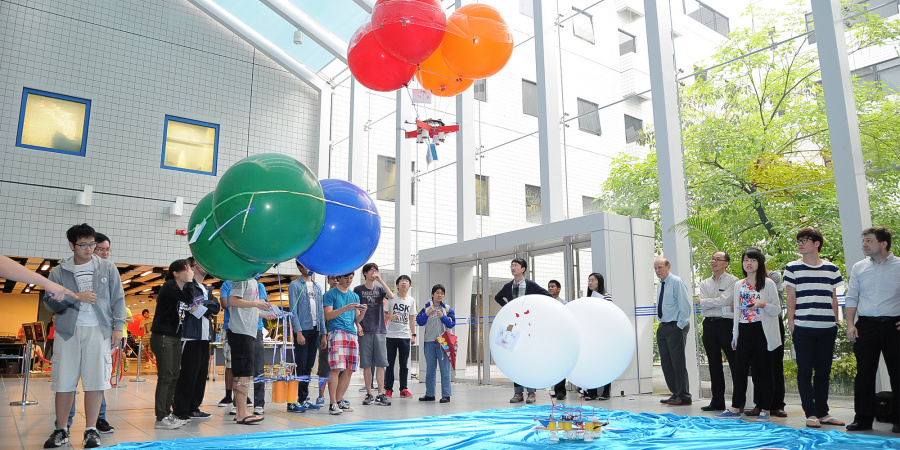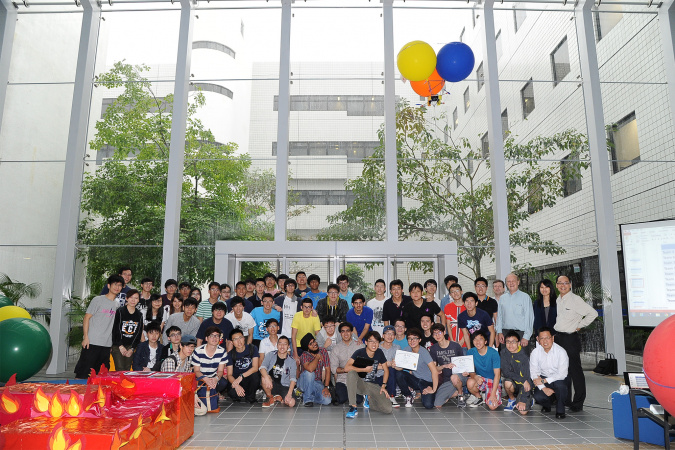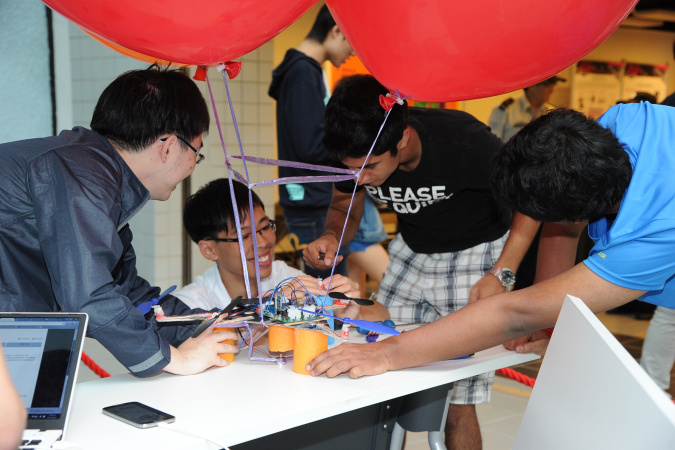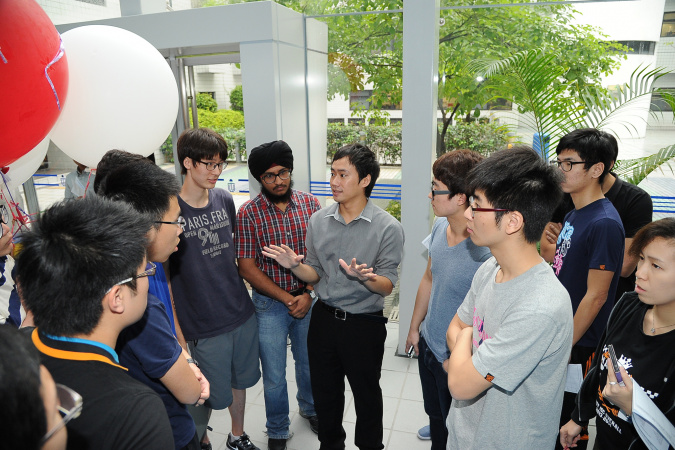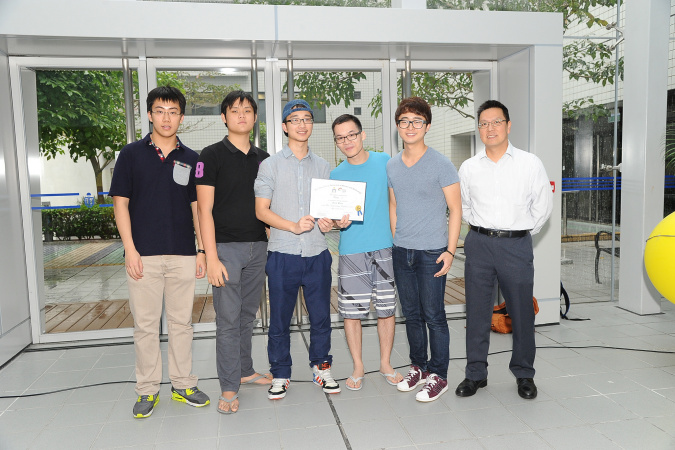Young Engineers Celebrated Experience of the First-ever Engineering Team Airship Design Course
Here comes the critical moment: is the “bucket of water” going to fall on the right spot to put out the “fire”? “Once I released the button, everything wasn’t under my control anymore,” recalls freshman Jae Hyung Lee, the airship controller of the Airship Competition’s winning team. 0.01 s, 0.02 s, 0.03 s…“The split second seeing it fall felt like forever.” When the airship finally made the right hit, everyone yelled and was overwhelmed by the joy of “Mission Completed.”
The Airship Competition, held on 23 April, is the highlight of a new 3-credit engineering course – Engineering Team Airship Design – targeting mainly at first-year engineering students. Aerial firefighting is the task each team has to complete. Equipped with helium balloons and propellers, and controlled by an Arduino program the students write on their own, the airship uses an electromagnet to pick up an object with a magnetic surface (the “bucket of water”), then carries it to the right location (where the “fire” is), and releases it.
Naming themselves “Troublemakers,” the winning team did not predict their victory against the other 9 teams and admitted causing a lot of troubles. Yet, the teaching team comprising of 5 professors - Roger Cheng, Neil Mickleborough, Ben Chan, Shenghui Song and Jogesh Muppala, 2 teaching assistants (TAs) and 8 student technical advisors (STAs) would not mind at all. They are driven by the objectives of letting the students appreciate different engineering fields, work in teams, and understand the complexities involved in making something that works. In short, “we want them to like the course and feel like an engineer,” says Paul David Lavigne, one of the TAs.
So, did the students enjoy the course?
The Troublemakers stayed up until 4am to prepare for the competition. “It wasn’t tiring because I wanted to do it,” says one of the students. “Yeah, we had fun!” the others agree.
Apart from the effort the Troublemakers had put, there were three keys to their win. The first was optimism. “Even though none of us had any experience of building an airship or a robot, we believed we were not inferior to the other more experienced teams.” The second was using a coordinate system for more precise positioning of the airship.
Last but not least, the “team” was the main contribution to success. Regardless of differences in technical and cultural backgrounds, the team members mixed well and learnt one another’s language. During the interview with the team, the members repeatedly expressed their gratitude to each other: “I have a good team. Thank you!”
The competition provided a unique opportunity to experience an engineer’s life. The students gave numerous examples of the similarities between the two: building something from zero, finding optimum solutions, facing unpredictability, and sometimes sacrificing rest time to do something they are passionate about.
While the professors and TAs are working diligently on improving the organization of the course, they also look forward to the completion of the Design Studio, a new building designated for engineering students to carry out design projects and engineer the future.
by student reporter Kaki Fong, 2013 Engineering Student Ambassador

